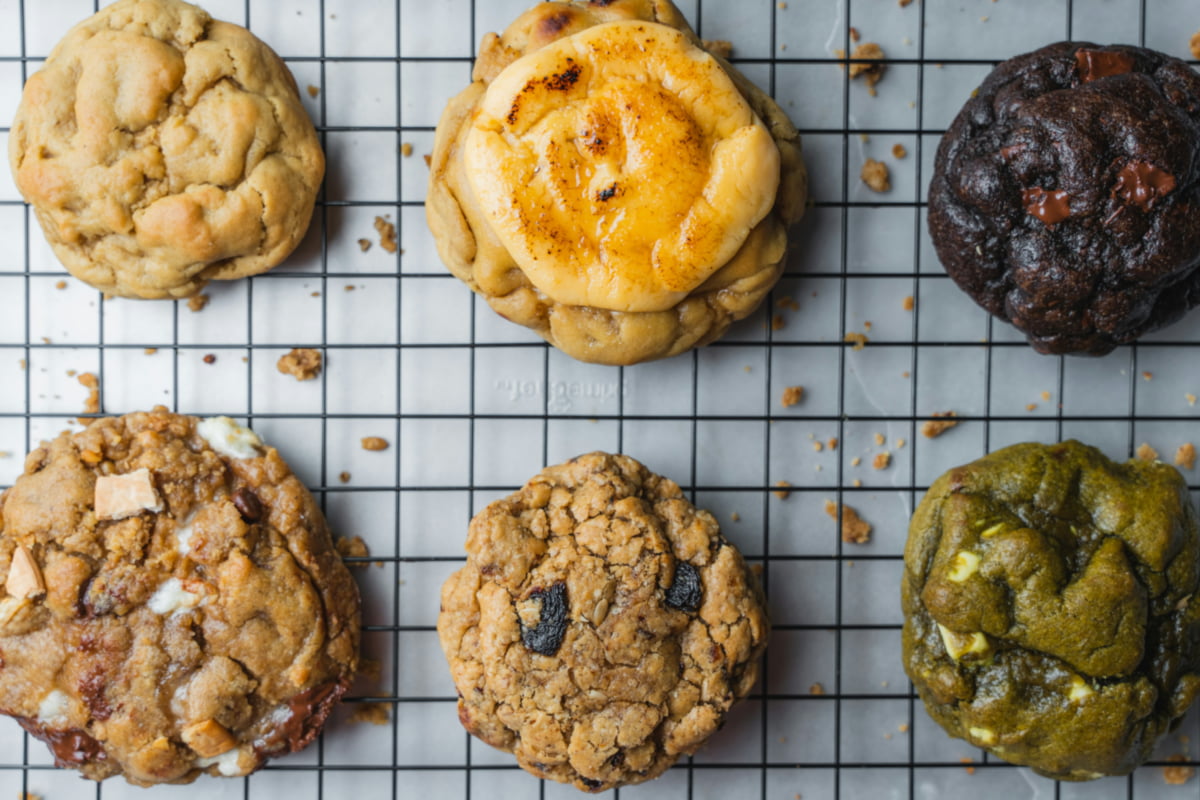
Yes, you can freeze cookies, but not all cookies are created equal. Some love the freezer; others fall apart in it. The difference isn’t luck, it’s science: fat, moisture, and sugar all decide how your cookies behave in the cold.
This guide breaks down what really works, what doesn’t, and how to bring your frozen cookies back tasting bakery-fresh.
Everything here comes from a mix of kitchen trials, reliable food science, and plenty of bakers who’ve tested the freezer as much as I have.
Why Freezing Cookies Isn’t That Simple (and Why That’s a Good Thing)

Most people think you can bake cookies, toss them in the freezer, and they’ll be fine. I used to think that too, it’s a cookie, right?
But once I started freezing different types, I learned it isn’t that simple.
Every cookie is built differently.
Some are buttery, some rely on eggs for structure, and some barely contain any moisture at all. Those small differences decide whether a cookie stays tender, turns crumbly, or somehow tastes better after freezing.
And that’s why people freeze cookies in the first place: it lets you bake ahead, save leftovers, or store dough for fresh cookies anytime, but only if you freeze the right way.
The Science Behind Freezing Cookies (Dough vs. Baked Cookies)

Freezing affects cookie dough and baked cookies differently, and understanding the basics helps you freeze either one without ruining texture.
Why Freezing Works (For Both Dough and Cookies)
Sugar, fat, and moisture are what make freezing possible:
- Sugar binds water so things don’t freeze rock solid.
- Fat (butter) firms up and protects texture.
- Moisture slows staling and keeps flavors stable.
In simple terms: the freezer doesn’t ruin cookies, it pauses the natural aging process.
What Freezing Does to Cookie Dough
Cookie dough actually handles freezing really well. It’s one reason many professional bakers chill their dough or freeze it before baking.
Here’s what’s happening:
- Frozen butter melts slower, so cookies spread less and bake thicker.
- Flour keeps hydrating, which deepens flavor over time.
- Gluten relaxes, making cookies more tender.
This is why many doughs end up tasting even better after a short freeze.
What Freezing Does to Baked Cookies
Baked cookies don’t improve with freezing, but they hold up surprisingly well:
- Crisp cookies soften a little.
- Soft cookies dry out slightly.
- Butter firms up in the cold, so frozen cookies feel harder until thawed.
- Delicate cookies struggle, especially meringues or anything airy.
Most baked cookies freeze fine, they just lose a tiny bit of day-one freshness.
How to Freeze Cookies (Two Main Methods)
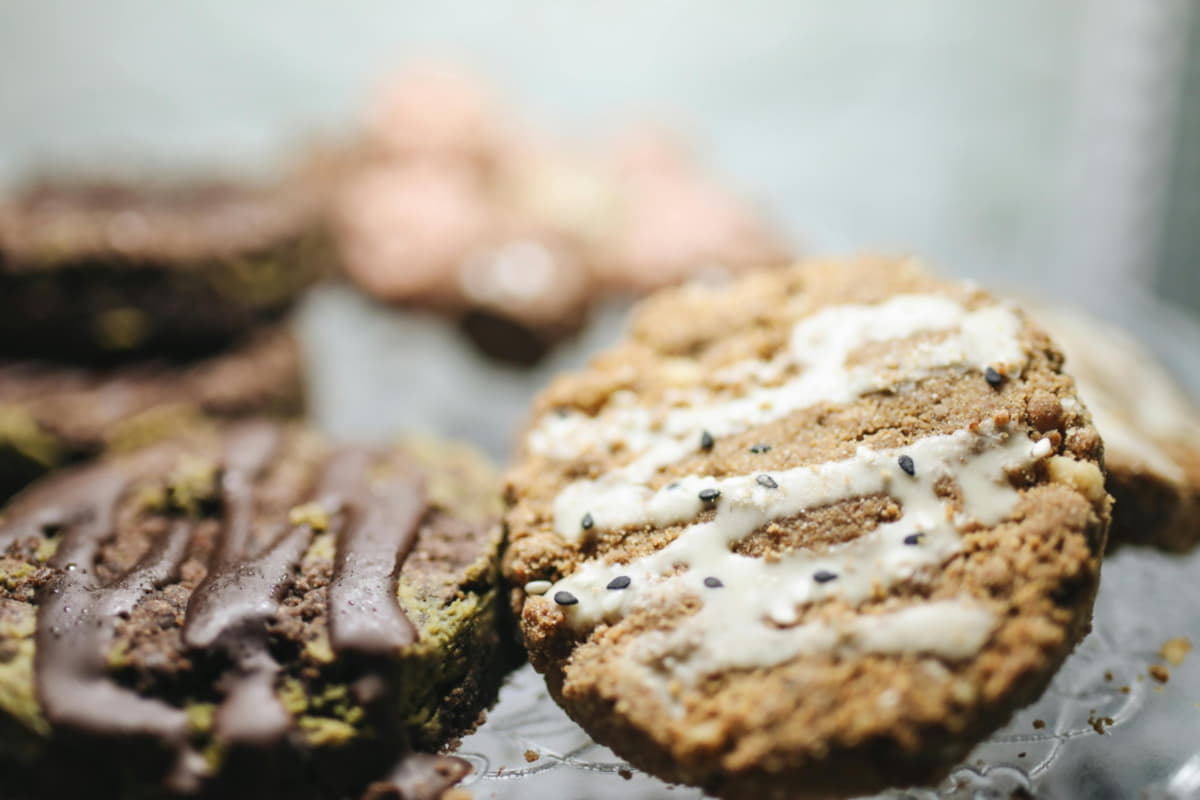
There are only two ways to freeze cookies, and which one you pick depends on what you want later:
Freeze the Dough (Best Flavor + Best Texture)
Dough freezes exceptionally well because the butter stays cold, the flour keeps hydrating, and the dough bakes up fresher later.
This works especially well for drop cookies, slice-and-bake cookies, and shortbread.
Why choose this:
- Fresher cookies
- Better spread control
- Bake only what you need
Freeze the Baked Cookies (Best Convenience)
Great for make-ahead batches, decorated cookies, bar cookies, or anything you want ready-to-go.
Why choose this:
- Works well for sturdy cookies
- No baking later
- Perfect for holidays and gifting
Cookie Categories: What Freezes Best (and What Doesn’t)
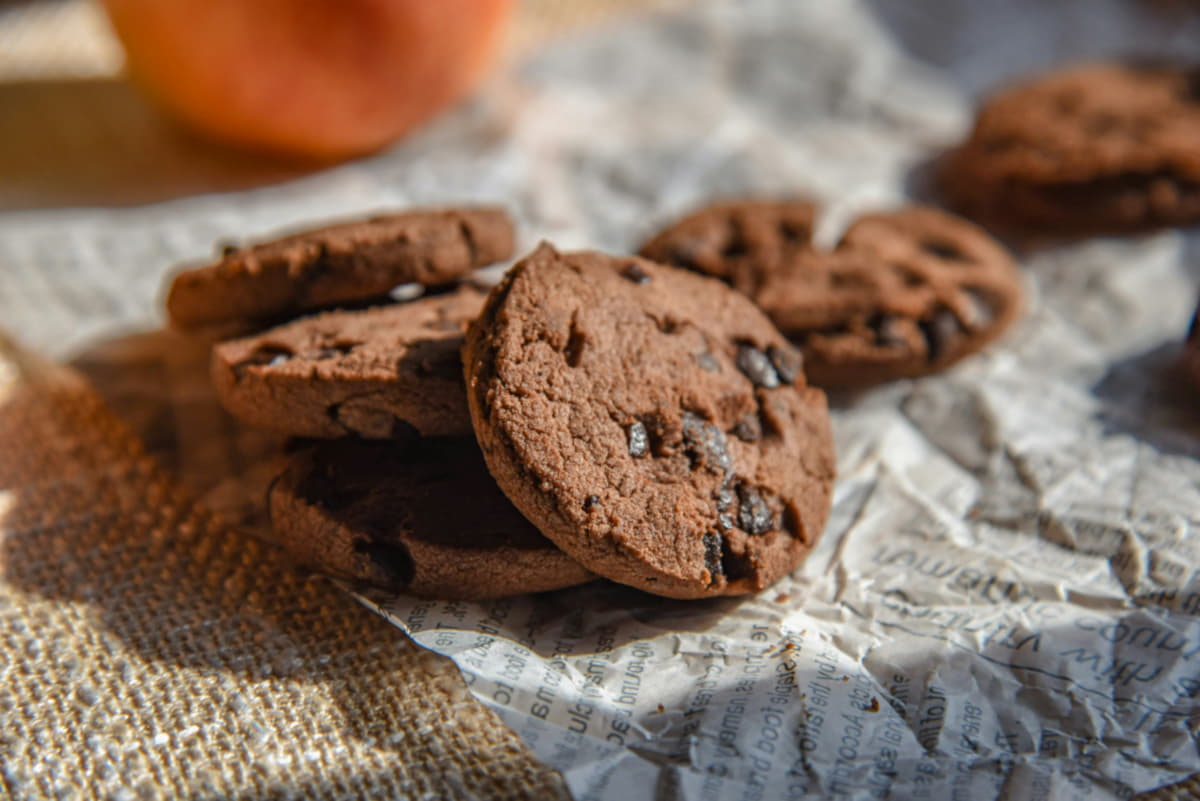
Just like cheeses, cookies behave differently in the freezer depending on structure, fat, and moisture.
Some come out tasting even better after a deep chill, while others fall apart or lose their snap.
Here’s how each type holds up, and how to treat both the dough and the baked cookie for best results.
1. Drop Cookies
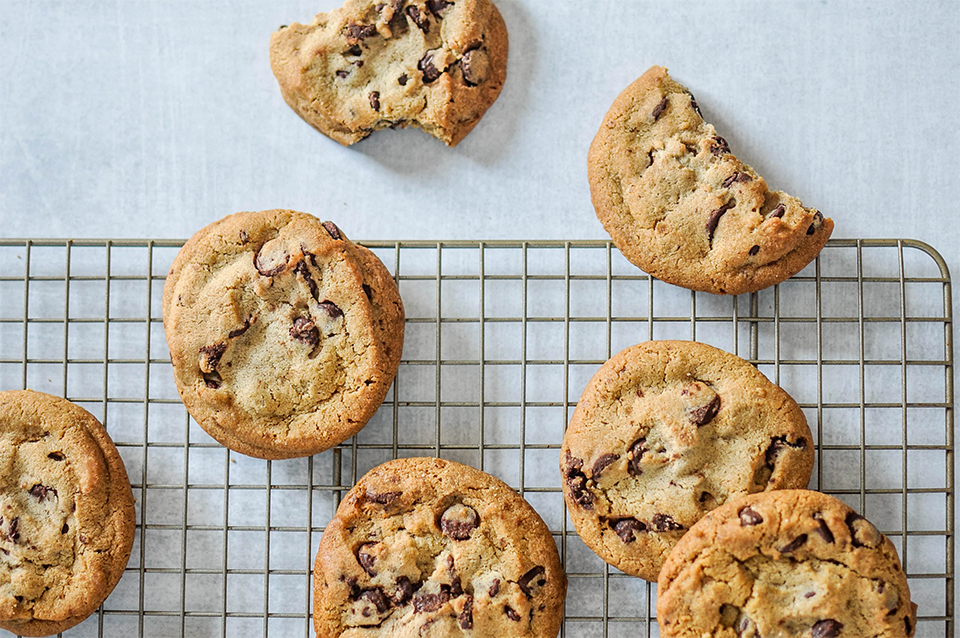
(Chocolate Chip, Oatmeal, Peanut Butter, Snickerdoodle, Double Chocolate)
Freezability: ★★★★★
Best frozen as: Dough balls or fully baked cookies
How They Behave:
High-fat, high-sugar doughs are freezer naturals. The butter and sugar work as built-in protectants, locking in flavor and moisture.
In fact, a few days or weeks in the freezer can improve drop cookies: the flour hydrates more fully, and flavors deepen.
Freezing the Dough (Best Option):
Scoop into balls, freeze until firm, then store airtight. Bake straight from frozen (add 1–2 mins).
They’ll spread slightly less and come out thicker and chewier, the kind of cookie that makes people think you used a secret recipe.
Freezing the Baked Cookie:
Works beautifully for sturdier styles like chocolate chip or oatmeal. Cool completely, wrap tightly, and thaw sealed. A short warm-up in the oven revives texture.
Pro Tips:
- Brown sugar–rich doughs stay moist and flavorful.
- Avoid underbaking before freezing; underdone cookies can get gummy when reheated.
2. Rolled & Cut-Out Cookies

(Sugar Cookies, Gingerbread, Linzer, Shortbread, Speculaas)
Freezability: ★★★★☆
Best frozen as: Flat dough sheets or undecorated baked cookies
How They Behave:
These cookies are built for structure, they hold their shape even after freezing. Low moisture helps prevent spreading or cracking, but they can dry out if not sealed well.
Freezing the Dough:
Flatten dough into discs or sheets, separate with parchment, wrap tightly, and freeze flat. Thaw in the fridge before rolling and cutting.
Freezing the Baked Cookie:
Pre-decorated cookies don’t fare well, but plain baked ones freeze perfectly. Thaw sealed at room temp, then decorate once fully defrosted.
Pro Tips:
- Shortbread improves after freezing, its buttery flavor intensifies.
- Re-crisp in a low oven after thawing for the perfect snap.
3. Bar Cookies & Brownies

(Blondies, Brownies, Lemon Bars, Brookies)
Freezability: ★★★★☆
Best frozen as: Whole slabs or cut bars
Technically, brownies and bar cookies aren’t classic “cookies,” but they share the same buttery, sugar-rich base, which means they freeze just as beautifully. Think of them as the cookie’s dense, chewy cousin that thrives in the cold.
How They Behave:
Dense, moist batters with high sugar and fat content freeze beautifully, they’re resistant to ice crystal damage. Most taste as good (if not better) after freezing.
Freezing the Whole Batch:
Cool fully, wrap tightly in plastic and foil, and freeze. Slice once partially thawed for neat edges.
Freezing Individual Pieces:
Layer with parchment, seal airtight. Thaw wrapped at room temp to keep the top crust from turning sticky.
Pro Tips:
- Avoid bars with wet toppings or curds (they’ll weep).
- Brownies often taste fudgier after freezing due to moisture redistribution.
4. Sandwich & Filled Cookies

(Whoopie Pies, Macarons, Jam Thumbprints, Cream-Filled Sandwiches)
Freezability: ★★☆☆☆
Best frozen as: Unfilled components
How They Behave:
Moist fillings don’t freeze gracefully, they separate, soak into the cookie, or make it soggy. The shells themselves usually freeze fine, though.
Freezing the Shells:
Freeze baked cookies separately, completely cool and sealed airtight. Thaw still wrapped to prevent condensation, then fill once at room temperature.
Freezing Assembled Cookies:
Avoid unless filling is stable (like ganache or thick buttercream).
Pro Tips:
- Macaron shells freeze perfectly, pros rely on it. Always fill after thawing.
- Jam or cream-filled cookies should be stored short-term in the fridge instead.
5. Meringue & Delicate Cookies
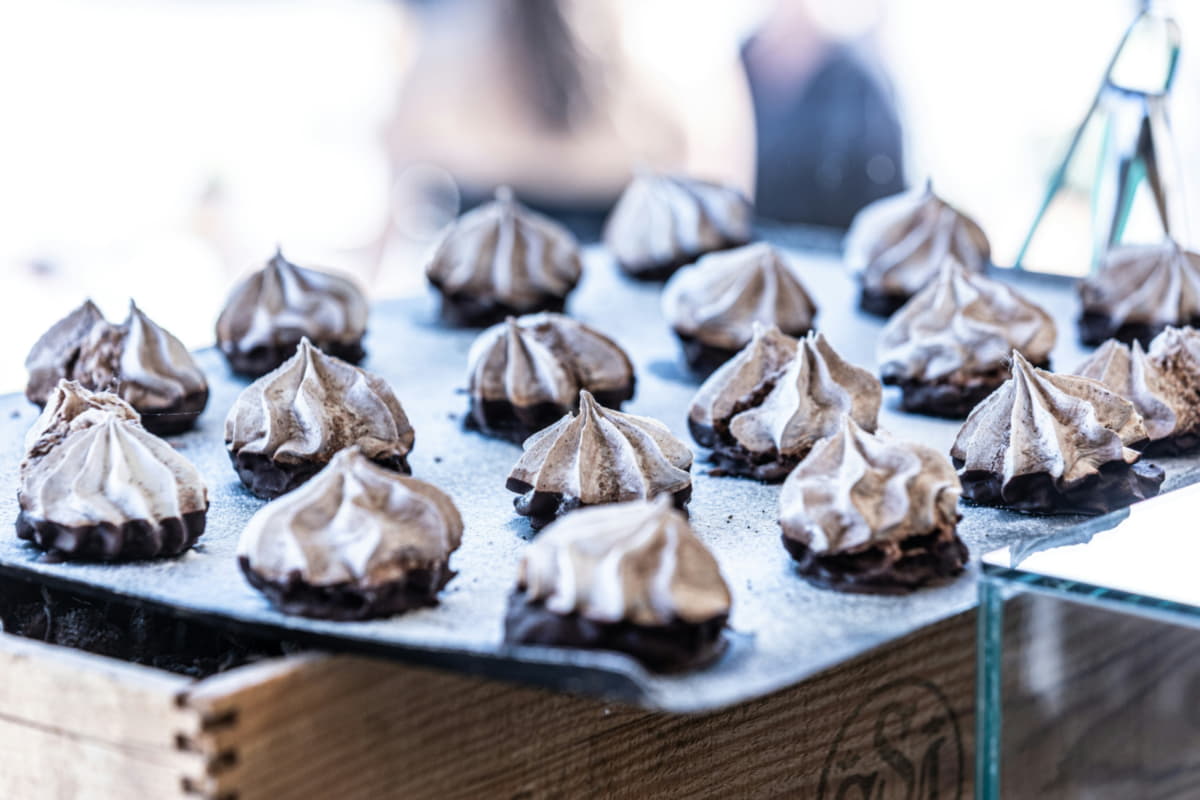
(Meringues, Lace, Tuiles, Florentines)
Freezability: ★☆☆☆☆
Best frozen as: Already baked, short-term only
How They Behave:
Moisture is their worst enemy. Even slight condensation makes them collapse or go sticky. If frozen at all, they need airtight containment and absolute dryness.
Freezing & Thawing:
Layer gently with parchment in airtight containers. Keep sealed as they thaw to minimize exposure to humidity.
Pro Tips:
- To restore crispness, reheat in a 200°F oven for 3–4 minutes.
- Store at room temperature with desiccant packets if possible, the freezer is a last resort.
6. Slice-and-Bake (Icebox) Cookies
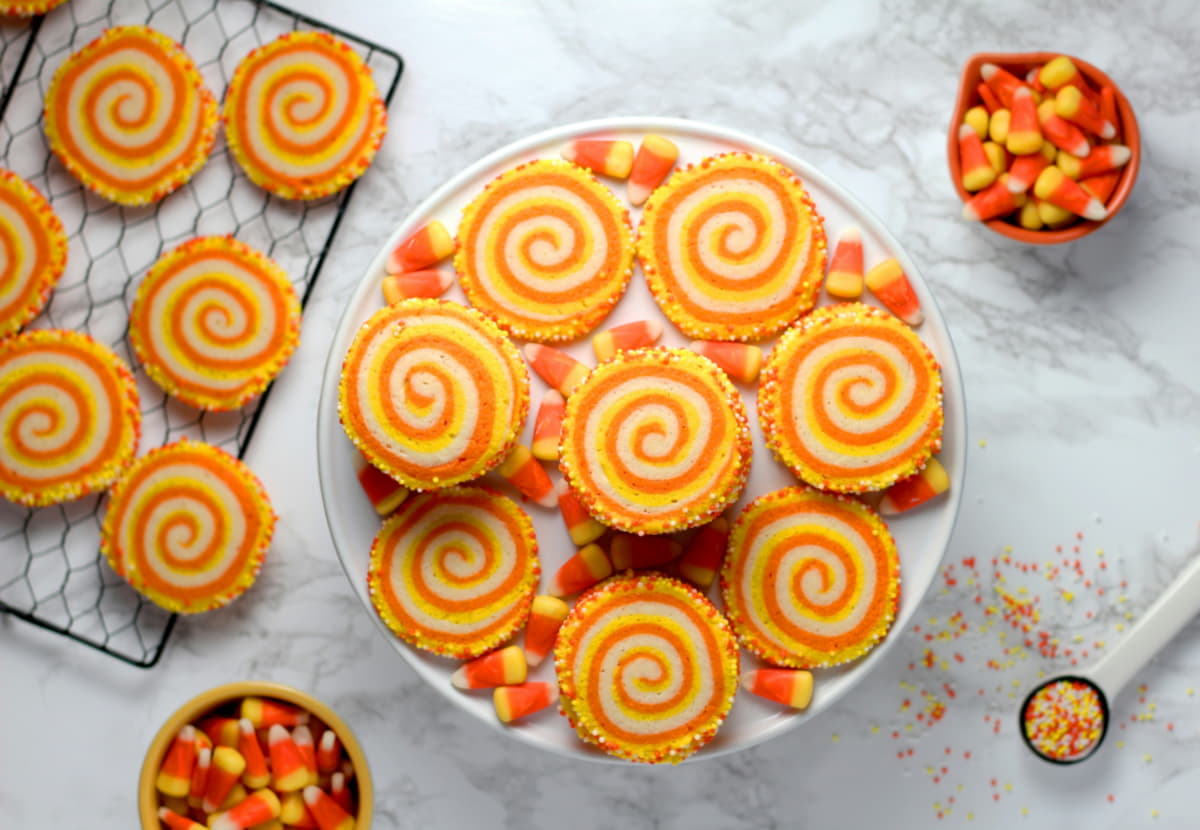
(Pinwheel, Checkerboard, Spritz, Chocolate Swirl)
Freezability: ★★★★★
Best frozen as: Dough logs
How They Behave:
These were practically invented for freezing. Their high-fat, low-moisture dough keeps shape and slices cleanly even straight from the freezer.
Freezing the Dough:
Form into tight logs, wrap in plastic then foil, label, and freeze. Slice directly from frozen, adding 1–2 minutes to bake time.
Freezing the Baked Cookies:
Also possible, they hold structure well, but the dough offers fresher results.
Pro Tips:
- If logs are too firm to slice, let rest 10 minutes at room temp.
- Use a hot knife for perfect cross-sections in patterned doughs.
7. No-Bake Cookies
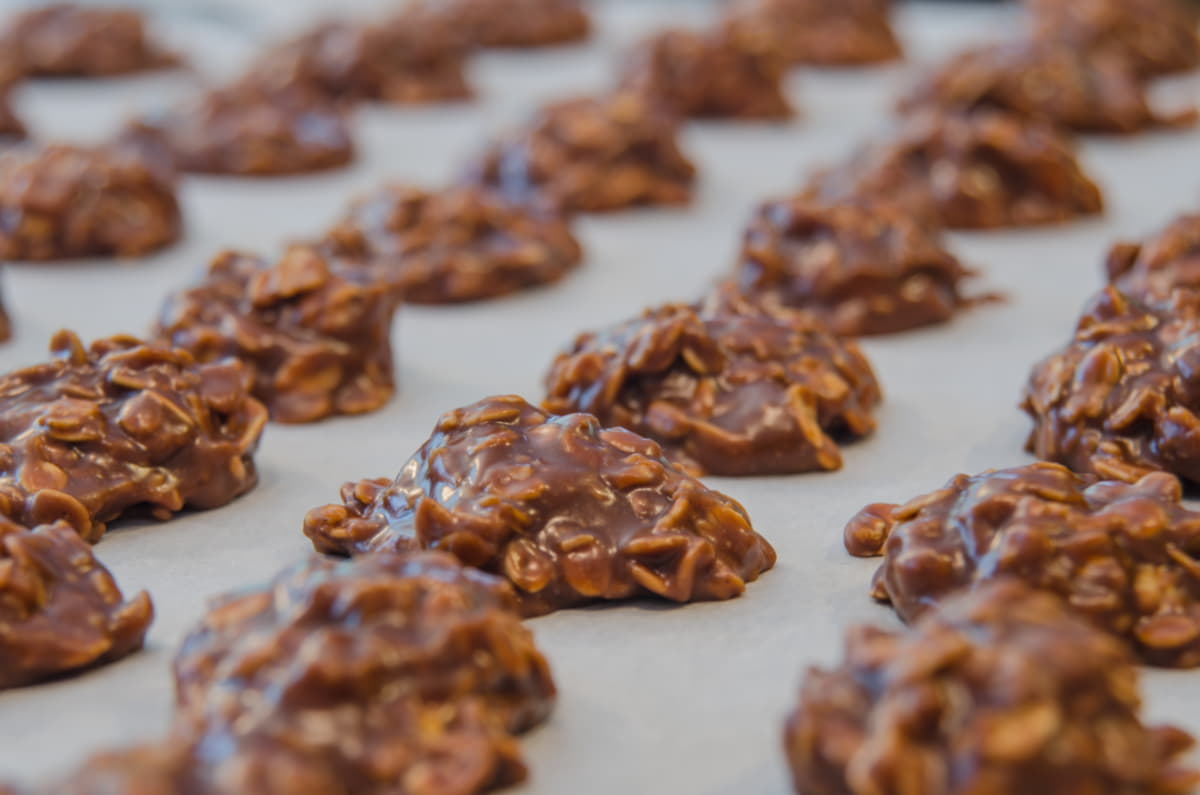
(Peanut Butter Oatmeal, Cocoa Haystacks, Cornflake Clusters)
Freezability: ★★☆☆☆
Best frozen as: Fully assembled cookies, short-term only
How They Behave:
They’re technically already “set,” but sugar crystallization and moisture changes can turn them grainy or tacky.
Freezing:
Layer with parchment in airtight containers. Keep for no more than a month. Thaw in the fridge, not at room temperature, to minimize condensation.
Pro Tips:
- Once thawed, drizzle with melted chocolate or nut butter to revive appearance.
- Avoid refreezing, they’ll turn chalky.
Thawing, Baking, and Refreshing Cookies
Freezing is only half the equation, the real magic happens when you bring your cookies back to life. Whether you’re thawing dough or baked cookies, the goal is the same: preserve texture, flavor, and structure.
8. Store-Bought & Packaged Cookies (Girl Scout, Grocery, and Bakery)
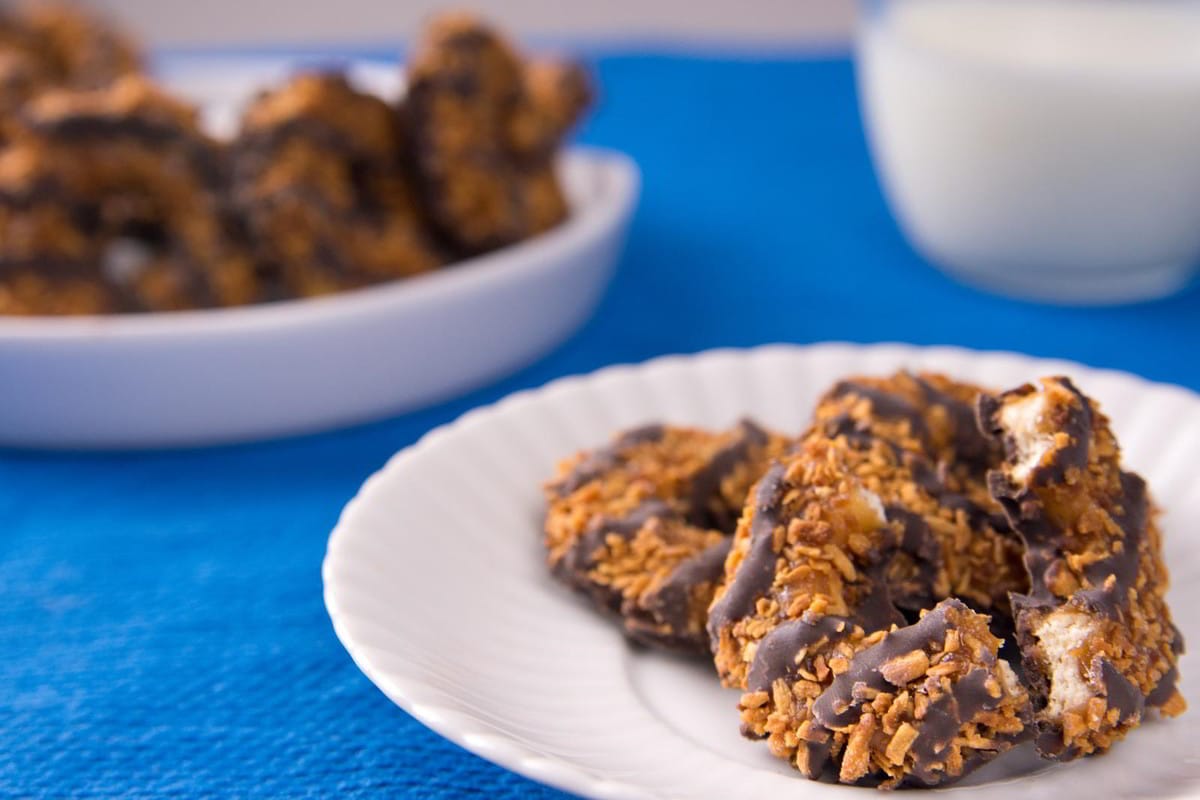
Freezability: ★★★★☆
Best for: Cookies with chocolate coatings, stable fillings, or crisp textures (like Thin Mints, Trefoils, or store-bought shortbread).
What to Expect:
Most packaged cookies freeze surprisingly well, especially sturdy ones like Oreos. That’s because they’re already formulated for shelf stability, lower moisture, more fat, and protective coatings.
Chocolate-covered cookies (like Thin Mints or Tagalongs) hold up best: the coating prevents freezer burn and moisture absorption.
Soft sandwich cookies or filled varieties (like Do-si-dos) can freeze fine short term, but fillings may separate slightly after thawing.
How to Freeze:
- Leave cookies in their original sealed packaging for short-term freezing (up to 3 months).
- For longer storage, wrap boxes or sleeves in plastic and place inside an airtight container.
- Thaw in the fridge overnight, still sealed, to prevent condensation.
Pro Tip:
Girl Scout cookies are often made with high-stability fats, meaning they survive freezing better than homemade versions. Thin Mints, in particular, actually taste better cold or frozen.
Expert & Tested Tips (Real-World Freezer Wisdom for Cookies)
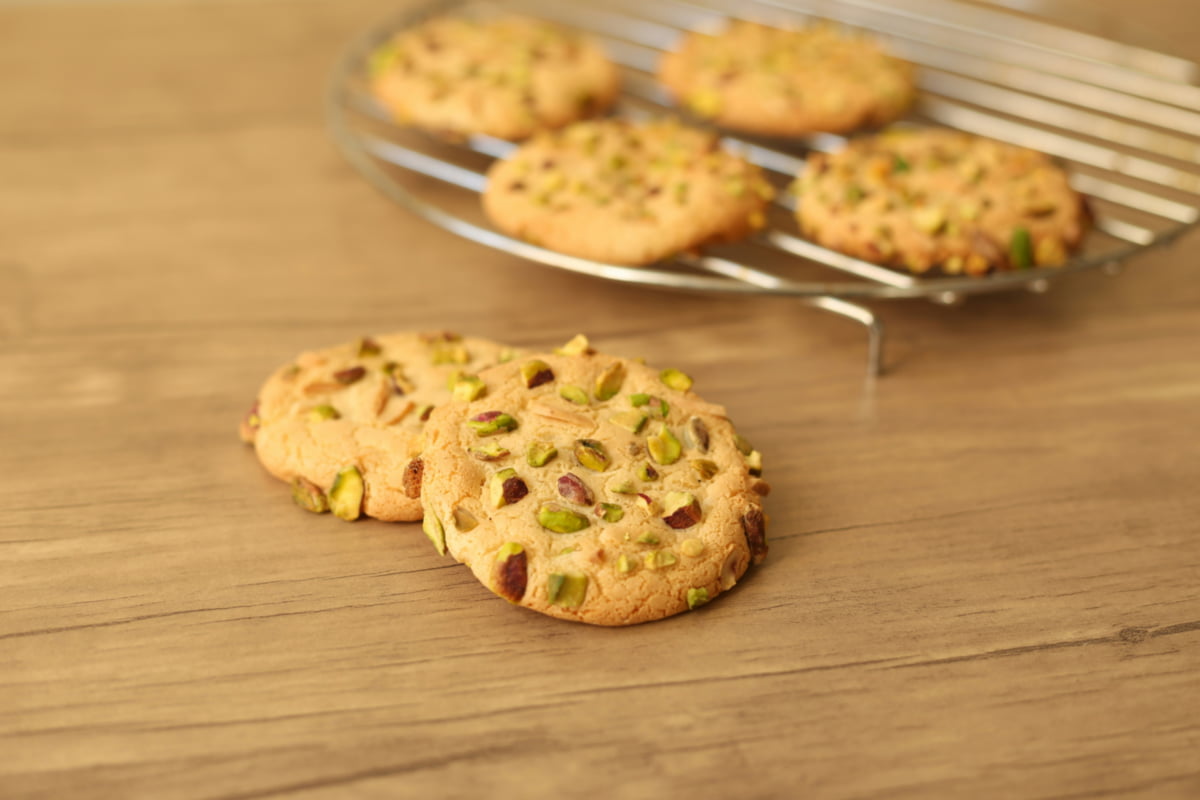
These are the little things experienced bakers do that keep frozen cookies tasting bakery-fresh, without repeating anything from the main sections.
1. Double-wrap baked cookies for maximum freshness
Air is the fastest way to ruin texture.
Wrap cookies tightly in plastic first, then place them in a freezer bag or airtight container.
2. Cool completely before freezing
Even a little warmth creates steam, which becomes ice crystals, the thing that makes thawed cookies feel soggy or stale.
3. Freeze cookies flat (especially soft ones)
Soft or chewy cookies squish easily.
Freeze them in a single layer first, then stack with parchment once solid.
4. Use rigid containers for delicate cookies
Meringues, lace cookies, florentines, and any crisp or airy cookie need a hard-sided container so they don’t crack or crumble in the freezer.
5. Label smarter than most people
Don’t just write the cookie name and date.
Add:
- “crisps in oven 5 min”
- “best thawed sealed”
- “contains nuts”
Notes like these make thawing and serving foolproof later.
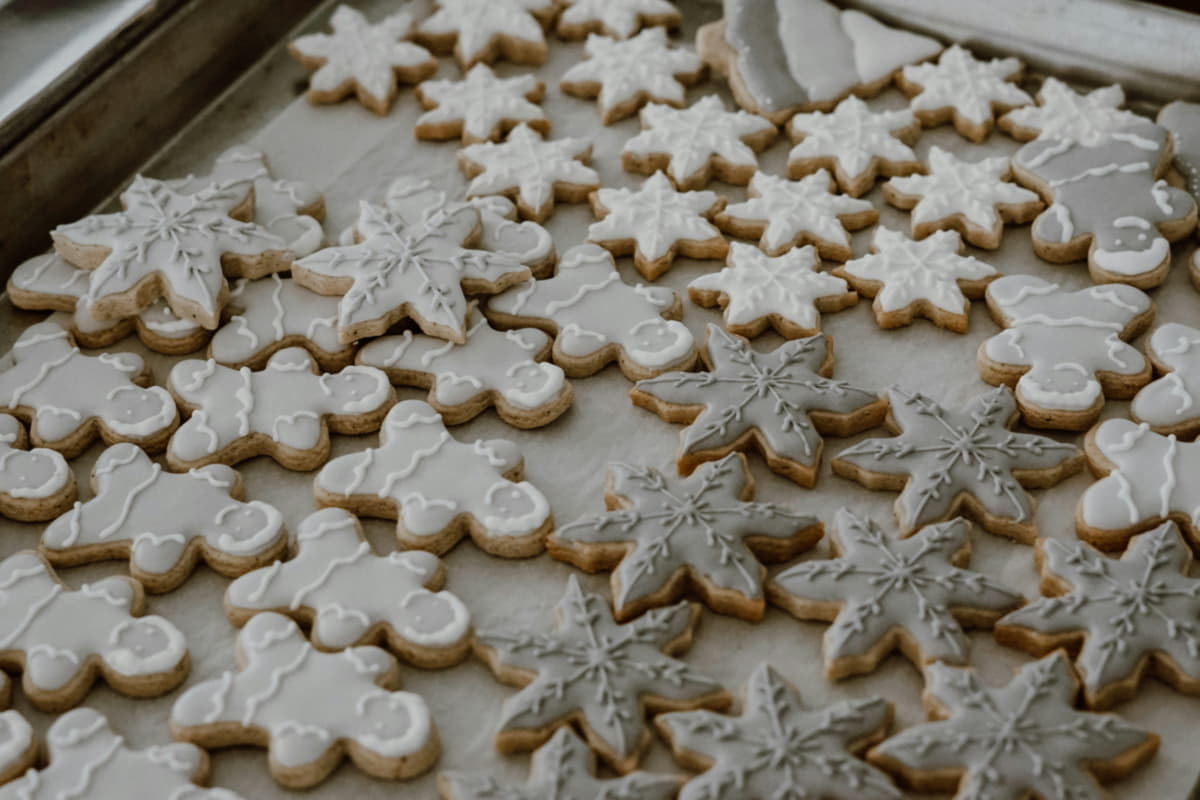
6. Avoid freezing decorated cookies with soft icing
Royal icing = great.
Buttercream, cream cheese frosting, chocolate drizzle, ganache = not so great.
Freeze undecorated, decorate after thawing for the best results.
7. Don’t refreeze thawed cookies
Every freeze–thaw cycle pulls out moisture and dulls flavor.
If they soften or lose crispness, revive them in the oven, don’t re-freeze.
8. Keep strong-smelling foods away
Cookies absorb odors faster than most foods because of their fat content.
Store cookies in a separate bin or section of your freezer if possible.
9. Refresh texture before serving, always
Even the best-frozen cookies benefit from a quick fix:
- crisp cookies → 275°F for 5 minutes
- soft cookies → slice of bread overnight
This makes them taste fresh, not “frozen.”
10. Freeze smaller batches instead of one giant container
When you only thaw what you need, everything else stays perfectly preserved.
Turn This Guide Into Practice: Your Freezing Strategy Starts Now
Freezing cookies isn’t complicated once you know what you’re working with. Match the cookie type to the right method, keep air out, thaw carefully, and your “frozen” cookies will taste just as good as the day you made them. Now that you know the why and the how, you can bake ahead with confidence, cut down on waste, and always have something sweet ready when you need it.
If you enjoy this kind of practical kitchen content, I have an entire section dedicated to freezing food, everything from baked goods to sauces and snacks.
Got a question about a specific cookie? Want to share your own freezing tips? Drop a comment, I’d love to hear how your freezer stash turns out.